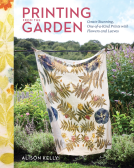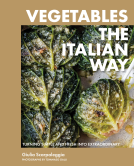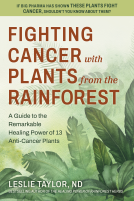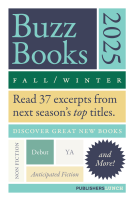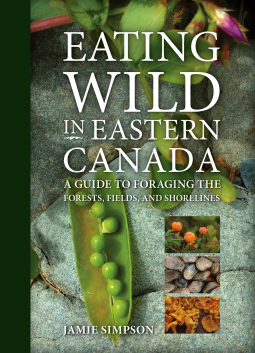
Eating Wild in Eastern Canada
A Guide to Foraging the Forests, Fields, and Shorelines
by Jamie Simpson
This title was previously available on NetGalley and is now archived.
Send NetGalley books directly to your Kindle or Kindle app
1
To read on a Kindle or Kindle app, please add kindle@netgalley.com as an approved email address to receive files in your Amazon account. Click here for step-by-step instructions.
2
Also find your Kindle email address within your Amazon account, and enter it here.
Pub Date May 23 2018 | Archive Date Jun 05 2020
Talking about this book? Use #EatingWildInEasternCanada #NetGalley. More hashtag tips!
Description
From fiddleheads to spruce tips, wild food can be adventurous and fun--with the right guide. In Eating Wild in Eastern Canada, award-winning author and conservationist Jamie Simpson (Journeys through Eastern Old-Growth Forests) shows readers what to look for in the wilds and how and when to collect it.
Grouping foods by their most likely foraging locations—forests, fields, and shorelines—and with 50 full-colour photographs, identification is made accessible for the amateur hiker, wilderness enthusiast, and foodie alike. Includes historical notes and recipes, cautionary notes on foraged foods' potential dangers, and interviews with wild-edible gatherers and chefs. While gathering wild edibles may be instinctive to some, there is an art to digging for soft-shelled clams and picking highbush cranberries, and Simpson joyfully explores it in this one-of-a-kind narrative guidebook.
Marketing Plan
National and regional print and digital ads
National media and review mailing
National author tour
Targeted marketing campaign
Pinterest giveaway
Netgalley
National and regional print and digital ads
National media and review mailing
National author tour
Targeted marketing campaign
Pinterest giveaway
Netgalley
Available Editions
| EDITION | Other Format |
| ISBN | 9781771085984 |
| PRICE | CA$22.95 (CAD) |
| PAGES | 152 |
Average rating from 5 members
Featured Reviews
I loved this book so much that I went out and bought a copy! Living in Newfoundland, this book will make a handy reference and will also inspire my family to go outside and explore. Thanks to NetGalley and Nimbus Publishing for the ARC. Fantastic little book!
 Media/Journalist 16509
Media/Journalist 16509
A new foraging book is sure to help folks in Eastern Canada and the Northeast United States find all kinds of fabulous wild foods. Eating Wild in Eastern Canada: A Guide to Foraging the Forests, Fields, and Shorelines provides photos, stories, cooking suggestions and recipes for all kinds of wild foods, from lobster mushrooms to conifer tips to beach peas to dandelion greens.
Eating Wild in Eastern Canada: A Guide to Foraging the Forests, Fields, and Shorelines
The 150-page paperback book is an enjoyable read with lots of color photographs, great information and personal anecdotes you only get from foraging books where the author truly loves his or her local wild foods. While I'm not in Eastern Canada, a lot of the wild foods in the book extend to my area (Minnesota) and I am eager to look for others when we vacation at the coast next time.
Eating Wild in Eastern Canada: A Guide to Foraging the Forests, Fields, and Shorelines
Plants, fungi and creatures included in the book include:
Fungi: black chanterelle, chaga, chanterelle, chicken of the woods, lobster mushroom, etc.
Trees, shrubs and forest plants: conifer tips and teas, acorns, elderberries, cucumber root, staghorn sumac, etc.
Fields, marshes, rivers and bogs: cattails, dandelion, stinging nettle, wild roses, Japanese knotweed, etc.
Sea plants: juniper, sea spinach, beach peas, glasswort, etc.
Seaweeds: dulce, kelps, sea spinach, etc.
Sea life: razor clams, mussels, sea urchins, etc.
Eating Wild in Eastern Canada: A Guide to Foraging the Forests, Fields, and Shorelines
More than 75 wild foods are covered in all.
There is limited information about most of these wild foods, just enough to give you an introduction to each one. There is a photograph and a short description for most, with a few suggestions of ways to eat them. Recipes are provided for some. I'd suggest seeking out books with more details about foods you really want to get to know. My own books about foraging elderberries and acorns and contain well over a hundred pages on each of these so of course you'd get more information and recipes there, but this book is an excellent guide to what's out there that you'd like to find and forage.
The book retails for $21.95 and is available at Amazon or can be ordered at your local bookstore or library.
All in all, I found this an enjoyable read that would be a great resource for anyone living in Eastern Canada and NE coastal states in the U.S.
Disclosures: I read a temporary digital ARC of this book for the purpose of review. This post contains affiliate links. Purchases made through these links earn us a small commission at no additional cost to you. We will never recommend a book here that we wouldn't recommend to a friend or purchase ourselves.
Eating Wild in Eastern Canada is a tutorial guide to general foraging with a specific focus on maritime climates and species. Released 23rd May 2018 by Nimbus publishing, it's 184 pages and available in paperback format.
Author Jamie Simpson is a lawyer, activist, and wild food expert with years of experience in foraging in the areas he talks about in the book.
Eating Wild is written clearly in layman's language and is easily accessible for the average reader. The book is built up logically with common sense safety instructions (if you aren't absolutely sure that what you're about to put into your mouth is edible, don't). The author also cautions against over-harvesting, a vitally necessary reminder everyone needs to hear.
One thing I loved about the layout was that the chapters aren't sorted into an herbal (as most field guides are), but grouped together in zones. Chapter 1 includes the species to be found in forest and zonal areas, Chapter 2 discusses wet environments like bogs, marshes, rivers, Chapter 3 covers seashores and brackish areas, etc. There's a serviceable bibliography and index at the back of the book. Scattered throughout the text, there are recipes which run the gamut from mild to adventurous. Included in each chapter is an interview or short bio with a restaurateurs or other forager.
The photography is excellent, clear, and supports and explains the text well with regards to which parts of the various plants, fungi, etc are usable and at which time of the year. There are also a number of good photos of finished dishes scattered throughout the book.
This isn't a replacement for a good specific field guide. It's a supporting text, lavishly photographed and with some good recipes.
Four stars
Readers who liked this book also liked:
Megan Ashley Smith, LCMHC, NCC
Health, Mind & Body, Nonfiction (Adult), Self-Help
Publishers Lunch
General Fiction (Adult), Nonfiction (Adult), Teens & YA
Silvia Moreno-Garcia
Historical Fiction, Literary Fiction, Sci Fi & Fantasy






